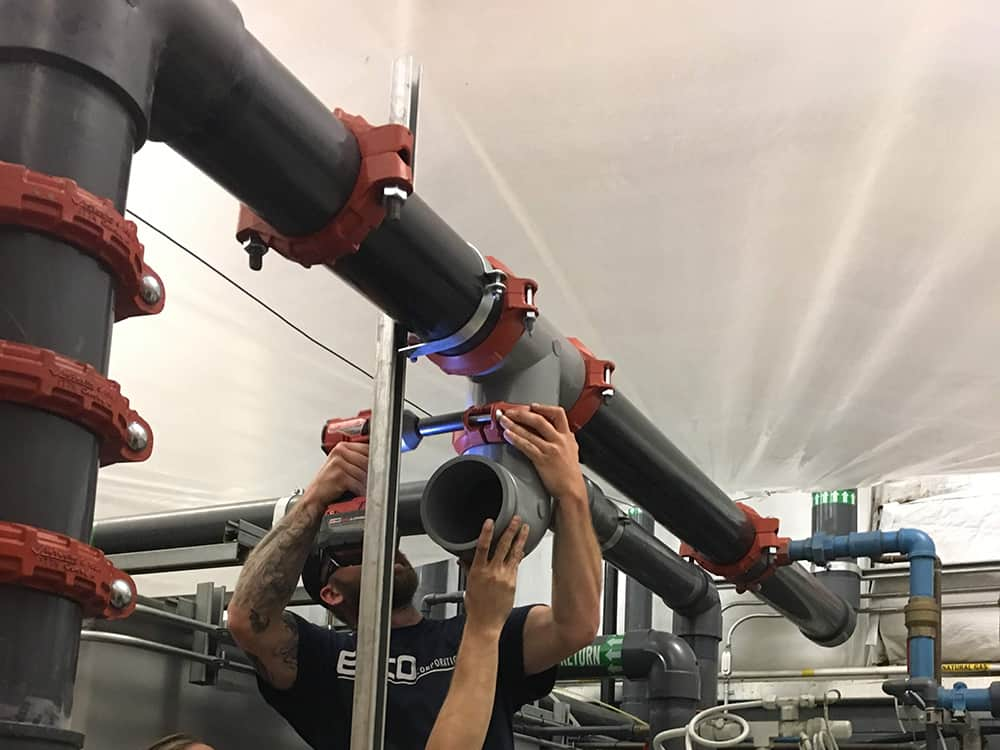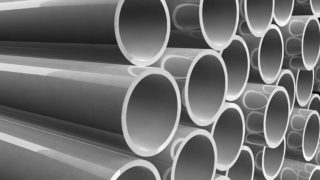Posted on October 28, 2019
Oftentimes when addressing a problem, the first solution considered is one that has been used in the past, and in the case of CPVC pipe joint failures, that more familiar pipe repair method uses solvent welding to restore watertight connections. However, there is now a mechanical CPVC pipe joining method available that offers some distinct advantages. In this blog, we will cover two ways to repair and join CPVC pipe, as well as a real-life case study of a successful mechanical CPVC pipe repair.
There are two ways to join CPVC pipe:
1) Join CPVC pipe by solvent welding
2) Join CPVC pipe mechanically
How to Repair and Join CPVC Pipe with Solvent Cement
While solvent welding is widely used, it is a process that requires a fair amount of preparation and the knowhow to execute it properly.
- Before any work can be done on a damaged CPVC pipeline, it must be emptied and cleaned, and all burrs and debris on the pipe must be removed so the primer and cement can be applied without contamination to enable a proper seal.
- Workers prep the CPVC pipe to prevent the primer from running out of the pipe end, then spread primer over the inside of one piece of pipe and the outside of the other.
- The cement is applied carefully on top of the primer. This step is critical to the integrity of the weld. Using too little or too much can affect the quality of the joint.
- Once the pieces are ready, the installer pushes them together, twists the pipe, and holds the pieces in place for about 30 seconds to prevent the inserted pipe from pushing out. For sizes 4”/DN100 and larger a pipe puller is recommended.
- The joint needs to set for at least 15 minutes before it can be handled, and the seal is not cured until the cement hardens. This set time is dependent on outside temperature and CPVC pipe diameter, which can take from 30 minutes (2½ – 8”/DN65 – DN200 pipe sizes) to two hours (10 – 15”/DN250-DN375 pipe sizes). For cold temperatures up to 24 times the set time is needed.
- When the cure is complete, the repair must be tested to ensure the joint has been assembled correctly. If it passes the pressurization test, the pipeline is ready for use.
In addition to requiring considerable skill on the part of the installers and a fair amount of time for curing, solvent welding introduces risks such as:
- Fumes, which create respiratory hazards and can cause serious eye irritation, dizziness or drowsiness; and
- Gases from the compounds can form explosive peroxides, which can accumulate in the chemical container and explode.
While solvent welding has been a familiar approach to repairing CPVC pipe, the introduction of a cleaner and more precise approach that eliminates the hazards associated with solvent cement aims to change that
How to Repair and Join CPVC Pipe Mechanically
- Using a portable, lightweight cut grooving tool, site personnel can cut a precise groove in Schedule 40 or 80 CPVC pipe, creating a groove profile that allows a mechanical coupling to be installed using only a socket wrench or impact gun.
- Stab the mechanical coupling onto the CPVC pipe end, insert the second pipe, and tighten the nuts and bolts until metal-to-metal contact occurs at the bolt pads
- A good CPVC pipe joint can be visually verified for correct installation.
The Victaulic mechanical solution for repairing and joining CPVC pipe provides a clean, fast and reliable joint, eliminating chemicals and odors associated with traditional installation methods. The Victaulic method employs a grooved mechanical pipe joining system designed specifically for use on CPVC pipe and requires no cure time. Installers can mechanically join this pipe regardless of weather conditions, without specialized tools, and without exposure to solvents and dangerous chemicals.
For more information on Victaulic’s PVC/CPVC system solution, click here.
Read on to learn how a facility in Canada experienced first-hand the advantages of a mechanical solution for a CPVC pipe repair.
Mechanical CPVC Pipe Repair Reduces Manufacturing Plant Downtime
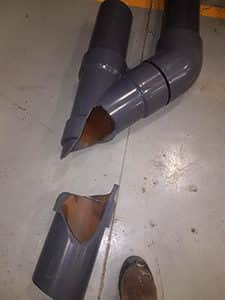 Downtime is an owner’s worst nightmare, so when a 6-inch cooling water line under 70 psi (4.8 bar) pressure fractured from corrosion, it was all hands on deck at the Calframax plant in Ontario, Canada. Consulting Pro Trades Mechanical, Inc. was called in to help. Having heard of mechanical solutions for joining CPVC pipe, they in turn called Victaulic.
Downtime is an owner’s worst nightmare, so when a 6-inch cooling water line under 70 psi (4.8 bar) pressure fractured from corrosion, it was all hands on deck at the Calframax plant in Ontario, Canada. Consulting Pro Trades Mechanical, Inc. was called in to help. Having heard of mechanical solutions for joining CPVC pipe, they in turn called Victaulic.
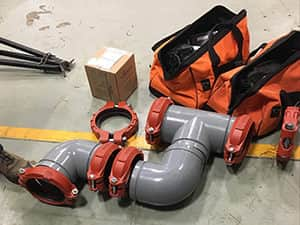 In a matter of days, the Victaulic materials were sent to the jobsite so the repair could begin. Using a cutting tool that allowed workers to prepare the CVPC pipe on site, installers cut precision grooves in the CPVC pipe and installed the grooved mechanical coupling.
In a matter of days, the Victaulic materials were sent to the jobsite so the repair could begin. Using a cutting tool that allowed workers to prepare the CVPC pipe on site, installers cut precision grooves in the CPVC pipe and installed the grooved mechanical coupling.
According to Jeff Lamarche, co-owner of Pro Trades, “The installers were immediately comfortable with the cut grooving tool, which made the prep work easy.”
The piping system had to be drained before repair work could begin, but it was not necessary to entirely evacuate the line since the mechanical solution does not require completely dry conditions. The location of the leak meant there was not a lot of room to perform the CPVC pipe repair, but that was not a limiting factor. “Grooving the mechanical joints made it easy to install the coupling,” Lamarche said. “The contractor had to manage some offsets, and that was much simpler with the Victaulic coupling than it would have been using a traditional joining method.”
Positioning the mechanical coupling was straightforward, and verifying the integrity of the connection was easy. “Installers could see the bolt pads come into contact with no visible daylight between the pads and knew the joint was properly seated in the groove.”
Since there are no special tools or skills required when using a mechanical CPVC joining method, “workers had no trouble carrying out an easy and seamless repair, and they finished the job in a single day – 48 hours faster than we could have managed with solvent welding,” Lamarche said. “We could not have finished this fast using a conventional solution. “Being able to get back online so soon speaks volumes for the product.”
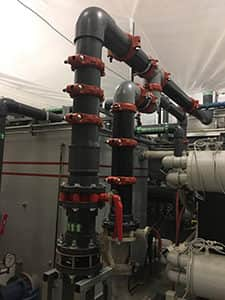 The speed of the Victaulic mechanical coupling solution for repairing and joining CPVC pipe was definitely less disruptive, and it delivered savings over other solutions for CPVC pipe repair.
The speed of the Victaulic mechanical coupling solution for repairing and joining CPVC pipe was definitely less disruptive, and it delivered savings over other solutions for CPVC pipe repair.
With this success, Calframax has broadened its acceptance of grooved mechanical couplings as a viable solution for CPVC pipe repairs and will use this technology for an upcoming repair on a steel mill cooling system line.
Interested in learning more about potable water trends towards CPVC? Check out this article published in the July 2018 issue of Plumbing Engineer, which explains the reasons behind CPVC/PVC’s recent acceptance and the challenges today’s contractors face when joining this type of pipe.
Looking for more case studies? Check out Victaulic case studies here.
